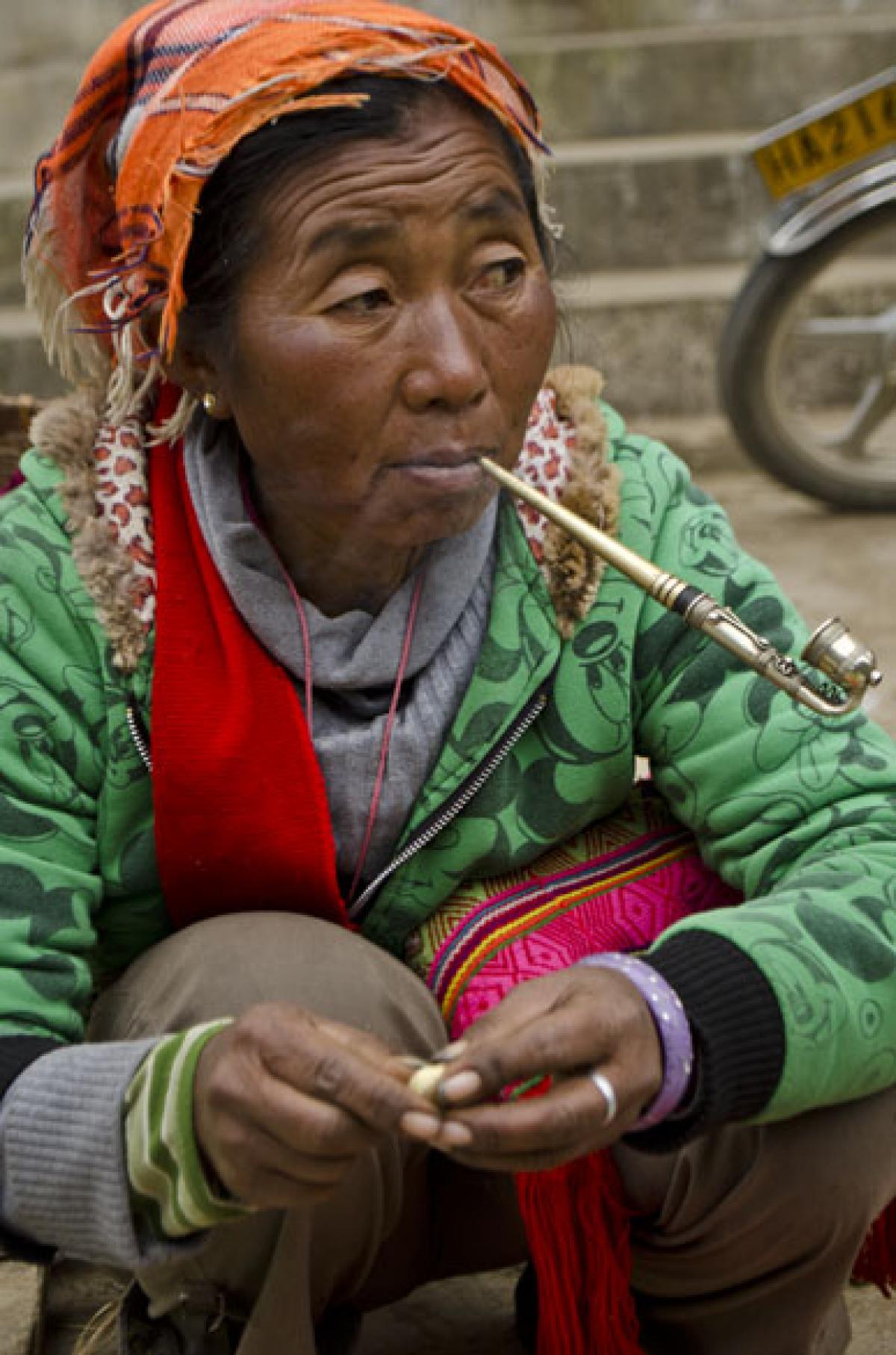Who is Selling at the Cangyuan Market?
- font size decrease font size increase font size
A few days after the New Year, it was an auspicious sign symbolizing new beginnings to see the the slightest crescent moon out during the night drive from the airport in Lincang to Cangyuan Wa Autonomous Region. The Wa minority are the major ethnic group of the region, whose culture is defined by colorful hand weaved clothes, dance and traditional storytelling. They don't have a written language unique to the area like Burmese, but they use english letters to form words. There were American missionaries that arrived over 100 years ago and then left, and there are Catholic churches here in the city. From what I'm told, Wa culture primarily resides in Myanmar with a population of over 600,000, and in China the numbers are much smaller with around 400,000 people. Cangyuan is the biggest city in the county. In a few of the shops the people I met were from Myanmar, but their Chinese was so perfect I would have guessed they were Chinese. Although the further out of this main city I went, the more Myanmarese immigrants I encountered who did not speak Chinese, and only spoke Wa and maybe Burmese as well.
The winding 4 hour drive from Lincang eventually led me to the Nangunhe hotel in a fairly well developed town obviously in transition to a city. The construction here is part of the national development for the entire country, so the new airport and corresponding shopping malls and hotel complexes all concerted together are radically transforming this off the map town into a modern city. We drive past rows and rows of shops, some selling fancy clothes, household items, and other wares, English pubs or café's, and of course Chinese food restuarants. I notice wooden housing on stilts simply thrown together amidst the major construction, with narrow brick streets leading into the suburbs with gated houses. It's common to see the Wa or Dai minority villagers here amidst the crowds sitting on the side of the street with their produce or otherwise handmade goods which they brought from the rural areas. In the morning, I eat a normal Chinese breakfast of mushroom baozi, which are bread rolls with a savory mushroom filling, and rice porridge. Then I take a walk around and check out the shops. Some of the traditional clothing shops have black, red, and deep purple colored clothing weaved into skirts and shirts. Their clothing has their cultural symbol of the bull embroidered on the front. This symbol is also found throughout the city in sculptures of bulls together or bulls heads, adorning the outside of the county buildings, and overall ingrained in the cultural heritage of the area. A few of the people, not all, wear sandalwood paste on their faces as in Myanmar, but when I ask they are local to the area.
I eventually reach an open air vegetable market, where the local rural people bring their produces to sell in the street. The inner section of the market seems to have more established vendors inside a main market building selling traditional clothes, toys, meats, rice, shoes, and knick knak items. These stalls don't change and are the same day after day. The meat market is in the very inner core, and there's also a section for selling live animals including fishes, chickens and ducks. I also found 20 different kinds of rice being sold by one vendor, and have since walked through many rice fields and tried many of these different varieties.
The vendors outside are mostly ladies, some are Wa minority people, and some are Dai minority people. At first, I couldn't tell their was a difference, but after a few days of exploring the area it became obvious which minority they were from from their clothing. Wa people usually wear a colored head wrap, often have a long pipe, and embroidered or woven brightly colored often neon bright clothes. Dai people often wear white, grey or pink colored head wrap. They often have Buddhist clothes, and often wear lighter colors. I later found out that the Dai people constructed all of the Buddhist temples in Cangyuan, which I document in another photoset on the blog.The vegetables they weigh with a rudimentary, tarnished, often broken scale and weights. Most of the younger women don't like to get their picture taken, but luckily the older women don't mind. Since they speak Chinese I can have a conversation if they ask me questions, and once I was invited to a wedding by a complete stranger!





























